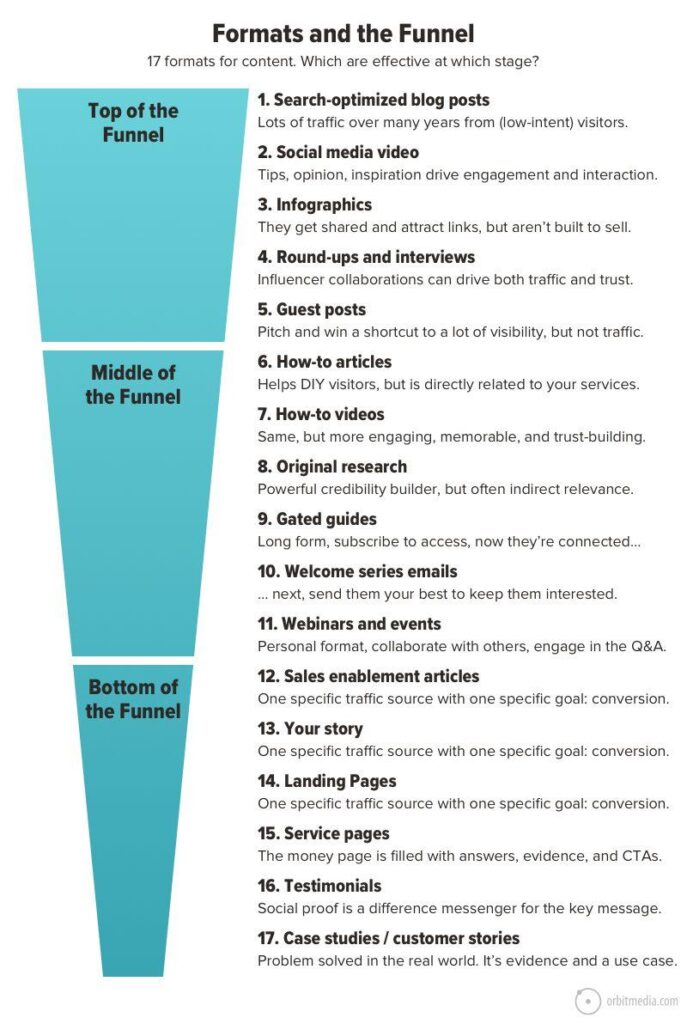Recently, content marketing expert Andy Crestodina at Orbit Media wrote a blog article that details content formats along the lead generation funnel.
It’s a similar concept to the one we detailed in creating content for the buyer’s journey.
Crestodina’s Formats and the Funnel infographic is an extremely helpful visualization. It helps us understand how content moves buyers through their journey, and which content formats are best at which stage.

Top-of-funnel Content
The top-of-funnel is all about brand awareness. Here, you’re not trying to push audiences toward a sale or a meeting. You’re simply providing awareness that your organization exists.
Common Misconception
You’ll notice that social media falls into the top-funnel content. Many B2B organizations make the mistake of treating social media like it’s a bottom-funnel tactic. They expect conversions, leads, and direct sales.
While that may be the case for some B2C organizations and is the case for social media advertising, organic social media is really a stepping stone to other content.
Your social media should guide audiences to mid-funnel content, which then guides people to bottom-funnel content—which finally offers options for conversion.
Middle-of-funnel Content
These content formats are about keeping your audience engaged and coming back for more. Your content should also offer audiences options to register, subscribe, or download in order to capture contact information.
Common Misconception
You might wonder why something like original research is listed as a middle-funnel format. Again, your goal with original research—like social media—shouldn’t necessarily be direct conversions. You’re providing valuable, credible, and educational information with the goal of getting a name or email address in exchange.
Your original research could also link to a contact page or landing page where a conversion may take place. And that leads us into the next stage.
Bottom-of-funnel Content
This is where lead generation truly happens. Those who consume this content are generally close to, or ready to, reach out.
They’re looking for proof that they should take the next step with your organization. That next step might be filling out a form, scheduling a meeting, or signing up for a demo.
Common Misconception
Because the goal of most bottom-funnel content is conversion, you may assume each content format must include a button to click, a person to email, or a number to call. That’s not always the case.
Sometimes bottom-funnel content is simply about building trust and credibility. It’s ammunition that a potential buyer can share with other decision-makers to validate their recommendation.
Bottom-funnel content may also be content you share during a sales presentation. Your presentation might include slides that talk about your company values or summarize your company history. A presentation to a healthcare organization may include case studies relevant to that industry.
